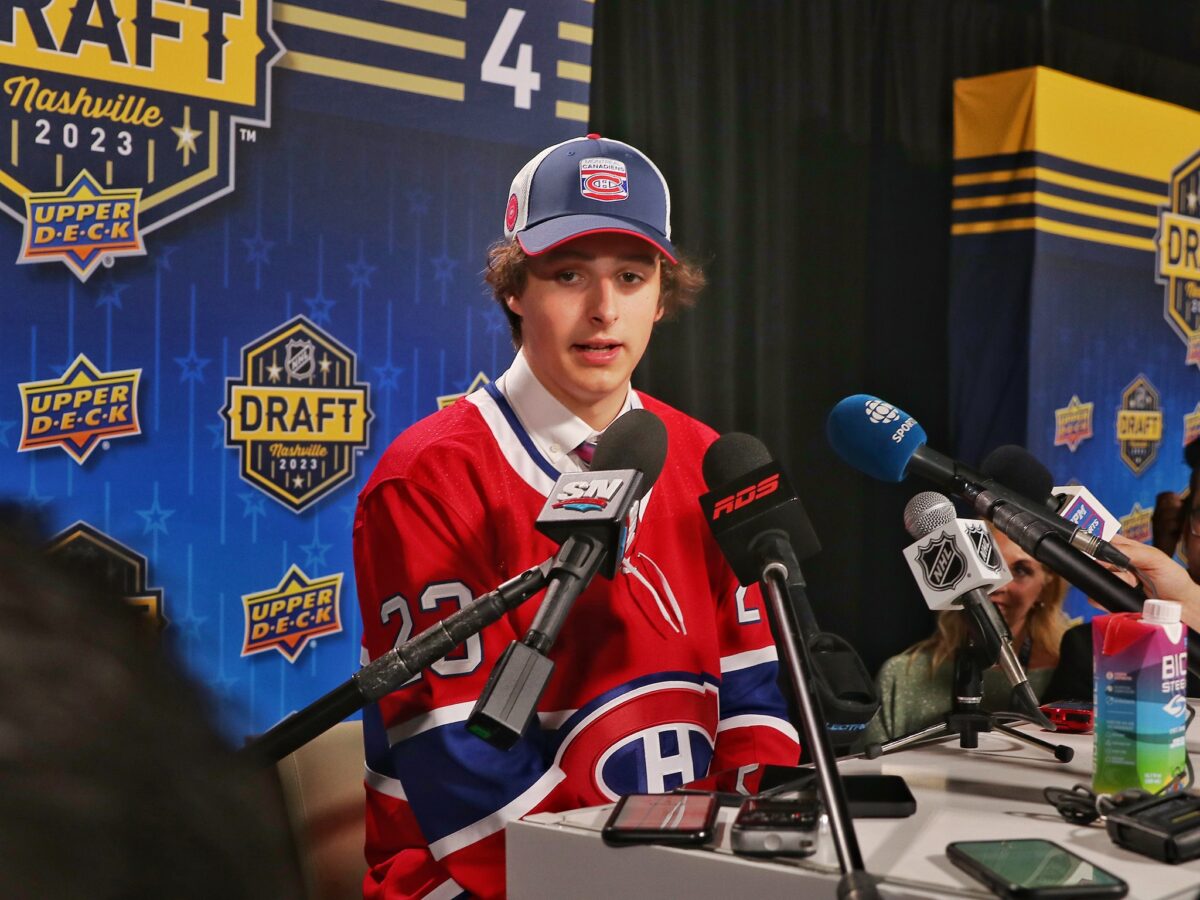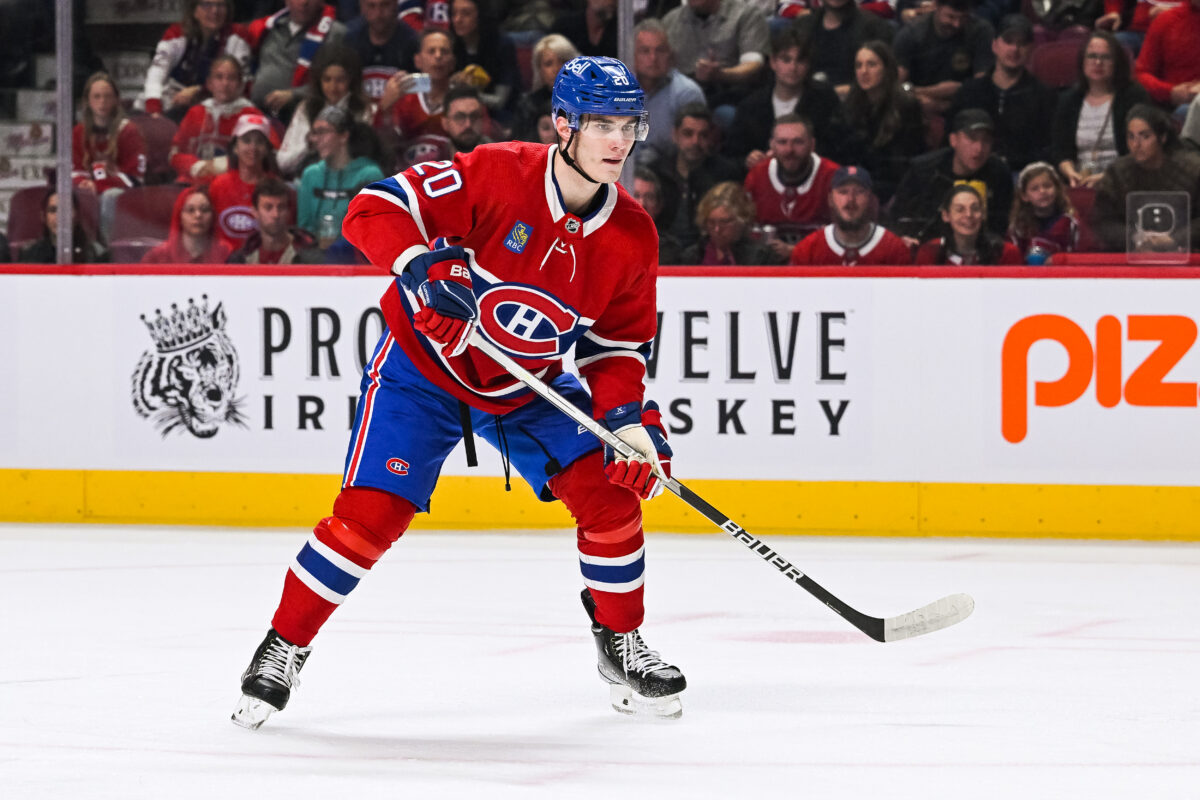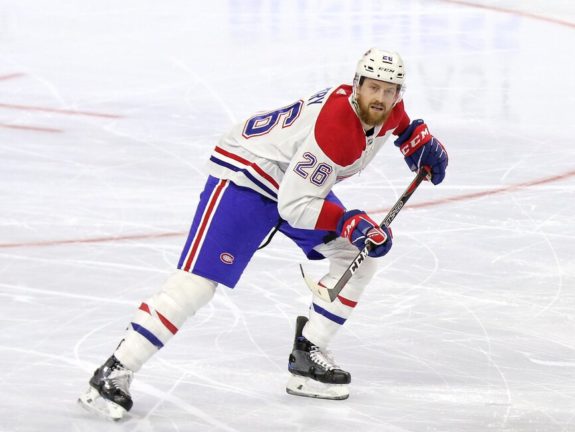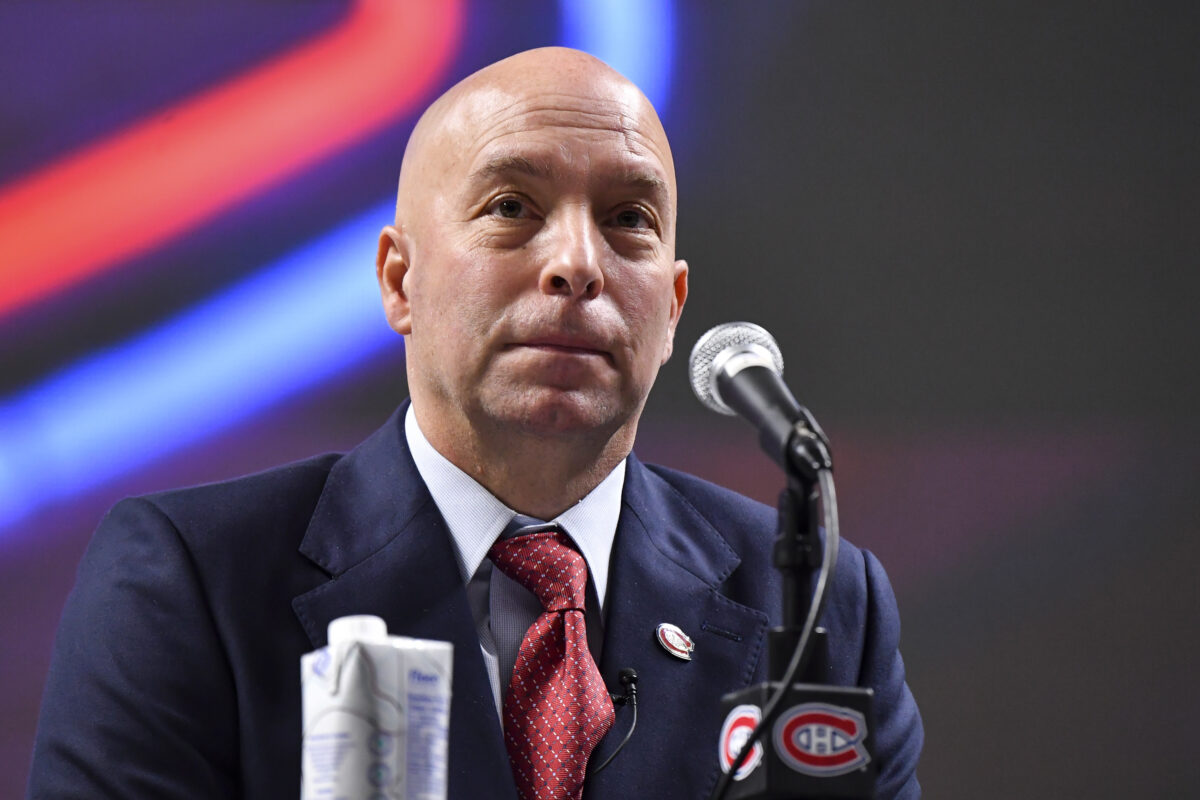For the second straight season, Montreal Canadiens general manager Kent Hughes made a controversial first-round selection at the NHL Entry Draft. However, you’d have to go back to his predecessor, Marc Bergevin, to truly see parallels in his drafting of defenseman David Reinbacher as the 2023 fifth-overall pick. Hopefully history isn’t doomed to repeat itself.

Obviously, Hughes’ 2022 first-overall pick in Juraj Slafkovsky, a power-forward winger, wasn’t universally beloved, with center Shane Wright having been at the front of prospect pack for most of the lead-up to the event. To be fair, Hughes did address the need for a center by also trading for Kirby Dach, which has worked out well, just not in the way anyone’s really expected (but more on that later).
Revisiting the Alex Newhook Trade
Hughes also traded for forward Alex Newhook just prior to the first round this year, arguably addressing a need for more skill up front as well. That presumably set the table for Hughes to draft a right-handed defenseman and forego the opportunity to draft skilled forwards like Matvei Michkov (No. 7 to Philadelphia Flyers), Ryan Leonard (No. 8 to Washington Capitals) or Zachary Benson (No. 13 to Buffalo Sabres).
Related: Canadiens Keep Adding to Forward Depth with Newhook Trade
Reinbacher is admittedly seen as a safe pick, perhaps the best defenseman available, with a high floor of a second-pairing defenseman. That’s actually more in line with what Wright would have been (second-line center), had the Canadiens drafted him instead.
The criticism lies in the view Reinbacher’s unlikely to develop into an elite talent (right or wrong). So, in drafting Reinbacher, especially as Dach is now expected to fill the hole at right wing on the first line, Hughes drafted for need instead of the best player available, according to many outlets… which runs counter to the philosophy he had previously espoused.
There is an argument that Slafkovsky was the best player available in 2022, based on the momentum he had gained in the months ahead of the event. So, it’s hard to suggest Hughes now has a reputation for going off the board. You’d really have to go back to 2018 for the last time the Habs committed the same faux pas and took Jesperi Kotkaniemi at No. 3.

Both times the Canadiens were vindicated by picks (almost) immediately after. In 2018, the Arizona Coyotes picked another center, Barrett Hayton at No. 5. This time around, the Coyotes seemed to justify the Habs targeting a specific position again, when they took a defenseman, albeit a left-handed one in Dmitry Simashev at No. 6. So, had the Canadiens traded down on either occasion, they probably would have missed out on the player they wanted. However, were Kotkaniemi and Reinbacher the players they should have wanted?
Reinbacher vs. Kotkaniemi
In Kotkaniemi’s case, the answer should be a clear-cut no at this juncture, especially seeing as he’s no longer with the team. He obviously signed an offer sheet with the Carolina Hurricanes after failing to gain traction in the Canadiens lineup and has since made impressive inroads there, especially this past season when he scored a career-high 18 goals, 25 assists and 43 points.

However, when immediately after the Canadiens took Kotkaniemi, the Ottawa Senators picked Brady Tkachuk, who’s coming off an 83-point season, it raises flags regarding the strategy. Of course Filip Zadina, taken sixth overall by the Detroit Red Wings, had been the near-consensus third-best player, and he hasn’t developed up to expectations.
Nevertheless, eventual stars like defensemen Quinn Hughes (Vancouver Canucks) and, to a lesser degree, Evan Bouchard (Edmonton Oilers) were also available. Ironically, Bouchard, a right-handed shot taken at No. 10, might suit the Canadiens’ current needs that Reinbacher may eventually instead, with Bouchard probably having more offensive talent.
So, if the Habs were so intent on going off the board, they may as well have picked Bouchard instead of Kotkaniemi. Hindsight being what it is, there really is no question that is the cold, hard truth, further proving that even the greatest hockey minds around do make mistakes. The fact Bergevin is no longer around, the Kotkaniemi (and Alex Galchenyuk) saga(s) contributing to his dismissal according to owner Geoff Molson at the time, proves it. This could be another one.
It goes to show one of the big flaws with drafting for need, how needs constantly change. Following the 2020 Stanley Cup Playoffs, the idea had been the Canadiens were finally set at center with Kotkaniemi, Nick Suzuki and Phillip Danault. Literally one year later, only Suzuki remained.
Fast-forward a few more years, and suddenly the Canadiens have Sean Monahan on top of Suzuki, with Dach and Newhook having the potential to line up there as well. It shouldn’t be lost on anyone, least of all Hughes who made the deals, that the latter two were acquired via trade. And it stands to reason, if centers can be acquired via trade, especially one taken third overall in 2019 (Dach), so too can right-handed defensemen under the right circumstances.
Canadiens Improve Depth on Right Defense, but at What Cost?
Look to defenseman Dougie Hamilton, who got traded twice in his young career, before signing on with the New Jersey Devils as an unrestricted free agent. He’s no longer the same player, but ditto for 38-year-old Brent Burns of the Carolina Hurricanes. Burns’ ex-team, the San Jose Sharks paid a king’s ransom for defenseman Erik Karlsson, but same argument. Sure, it may not be easy per se, but the argument here is the better the player, the harder it is to trade for them, which is another reason why the recommended course of action is to draft the best player available when you get the chance.
There were extenuating circumstances admittedly, but Hughes himself traded his No. 1 defenseman for all intents and purposes in the right-handed Jeff Petry to the Pittsburgh Penguins just one year ago. The return, left-handed defenseman Mike Matheson, was good, so no complaints in general, aside from how it seemed to exacerbate the situation on the right to the point the Canadiens apparently felt like they had to address a lack of depth at the position.

However, keep in mind the Canadiens do have two young right-handed defensemen in the pipeline in Justin Barron (another Hughes trade acquisition) and Logan Mailloux. Superficially speaking those two names might suggest the situation isn’t quite as dire as you’d expect, judging by the Reinbacher pick.
Mailloux is obviously polarizing, but he has his share of proponents. Meanwhile, Hughes gave up a pretty penny for Barron: a pending restricted free agent in Artturi Lehkonen, who has enjoyed a great deal of success with the Colorado Avalanche. So, by picking Reinbacher, who again realistically projects as a top-four defenseman, are we to assume the Habs don’t see either Barron or Mailloux as being quite that capable? If so, that’s a huge indictment on the decisions to acquire each of them.
Indictment of Canadiens, Not Reinbacher
Granted, Reinbacher’s strength is more so his defense, as opposed to the offense of the latter two, but that just makes the pick all the more questionable, in that the Canadiens used a fifth-overall pick in a stacked draft on a shutdown defenseman. That’s an exaggeration for effect, but you (hopefully) get the point. The Canadiens opted against picking an elite talent in Michkov for example when, very realistically, they can acquire someone else of Reinbacher’s caliber without breaking the bank in the future (hypothetically speaking).
Please don’t think this is a similar indictment on Reinbacher’s talent. By all accounts, he’s going to be a solid NHL player and should help the Canadiens a great deal, but the point remains the Habs didn’t help themselves out as much as they could have.
By now, the clip of Carey Price flubbing Reinbacher’s name on stage has made the rounds. That’s obviously bad enough, but you need only think back to when the Canadiens made Price their last fifth-overall pick (2005) for an even worse illustration of how bad this has the propensity to be.
Back then, the Canadiens had a solid starter in Jose Theodore in net (not to mention Cristobal Huet… and Jaroslav Halak in the pipeline). Admittedly Theodore’s stats would soon take a nosedive, but the Habs didn’t know that at the time. In other words, they absolutely didn’t draft Price based on a need for goaltending. They drafted him because, based on a comprehensive account of the pick written by Sportsnet’s Eric Engels, the Habs felt he was the one remaining prospect who could become a franchise player.
There are obviously multiple factors that go into the development of players. However, it’s probably no coincidence the Canadiens’ most successful pick of this century was someone that had that level of upside in their minds. Contrast that with Reinbacher, Hughes calling him a “diamond in the rough.” That’s rough, period.

Maybe Reinbacher develops into the top-pairing defenseman the Canadiens hope. Maybe not. What’s undeniable though is no member of the Canadiens can honestly say, as has typically become tradition after any high first-round pick, that their guy was the best player left standing on their list. Reinbacher was the player they wanted, put simply… which is understandable, just ironic, because it’s clear they were drafting for need. As has been proven time and again, there’s a significantly greater-than-zero chance he won’t be the player they actually need as a result when the time comes.
